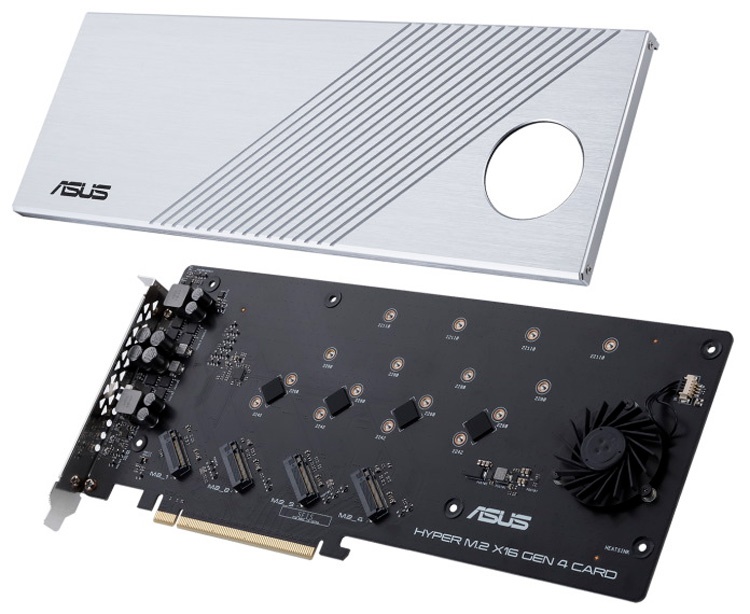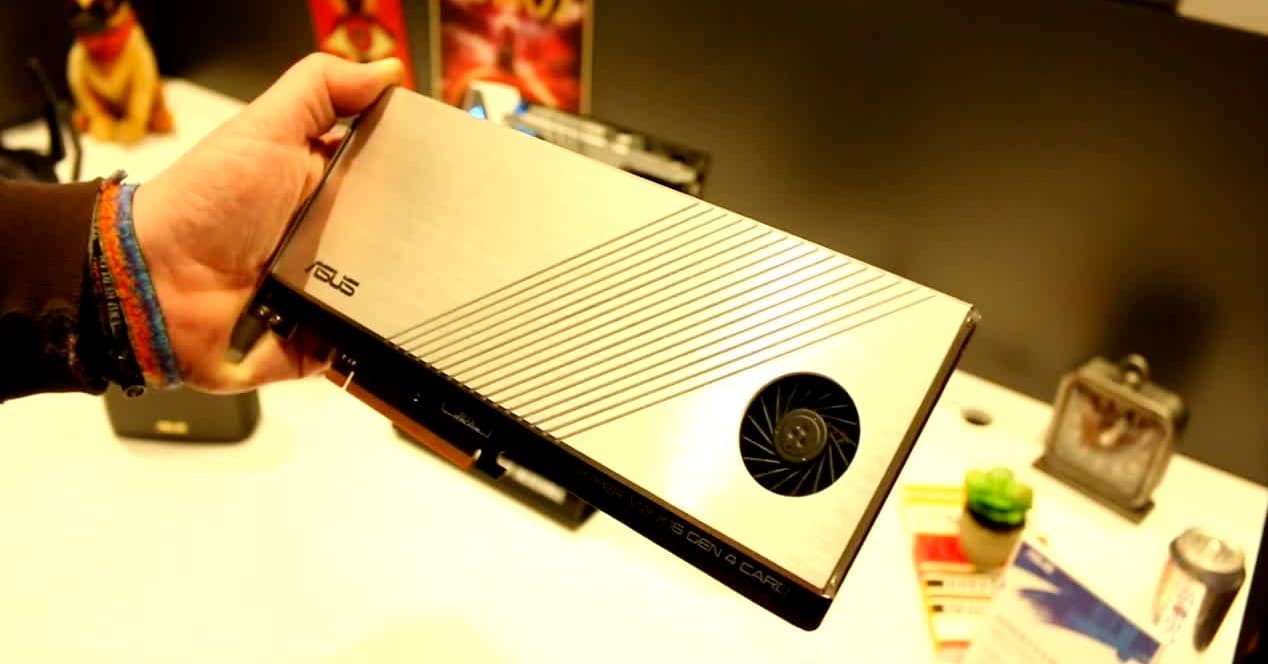The ASUS Hyper M.2 x16 Gen 4 is a expansion card inside which four M.2 slots have been enabled. These slots allow you to insert units NVMe SSD of a maximum storage capacity of 2 TB for each of them. Each of these SSDs may have a format that allows a length of up to 110 mm for longer units. But it also allows other models to be installed in the formats 2242, 2260 and, most commonly, 2280.
The refrigeration It is something that has been taken into account when developing the new Hyper M.2 x16 Gen 4. Unlike the original model, in which all the cooling was passive, the new model incorporates a blower type fan. This will be responsible for moving an air flow over the M.2 units that the user installs inside the ASUS card. Even so, the manufacturer has also planned thermal pads for each of the SSDs, so that they can transmit their heat when operating to the external housing, made of aluminum.
The ASUS Hyper M.2 x16 Gen 4 allows to reach 256 Gbps of file transfer
One of the great advantages of the ASUS Hyper M.2 x16 Gen 4 card is that it allows you to create a RAID 0 with all the NVMe SSDs that we connect to you. It is true that, in order to do so, it is necessary for the motherboard to support the characteristic of PCIe lane bifurcation. That is, the PCIe x16 slot can be divided internally into 4 sections with 4 PCIe tracks each. This allows each NVMe SSD to use a 4-way group for its data transmission needs.

As we said, the new ASUS Hyper M.2 x16 Gen 4 expansion card allows you to create RAID 0 configurations. This means that your user can have a Virtual NVMe SSD with a maximum capacity of 8 TB (4 x 2 TB). And with a maximum file transfer rate of 256 Gbps (or, what is the same, 32 GB / s).
These transfer rates are of little application in the PCs and activities of most desktops. However, for computers intended to work with very large files, these data transfer rates are exactly what they may need. That is why, the manufacturer sees more its use in computers that mount the new AMD Threadripper 3000 processors, on the motherboards with the chipset TRX40 Or even on some motherboards with the chipset AMD X570 After all, these two chipsets are the only ones that support the PCIe 4.0 bus In the desktop environment. Whether professional or not.















